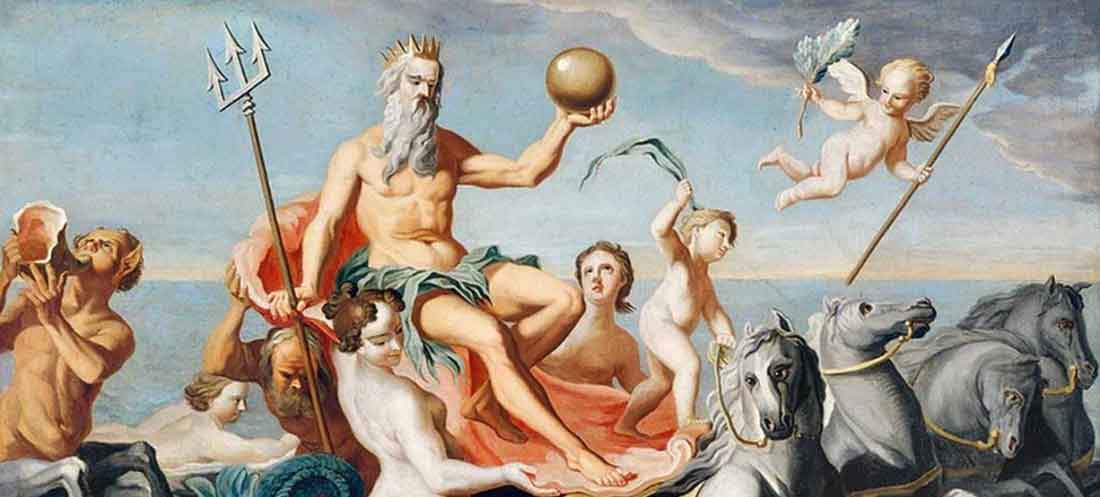Odysseus and the Trojan Horse

The tale of the Trojan Horse is a saga steeped in betrayal and deception, hailing from the epic poem “The Odyssey” attributed to the ancient Greek poet Homer. As the Greeks besieged Troy for ten long years without success, Odysseus devised a cunning plan to infiltrate the impenetrable walls of the city. Crafted under his strategic guidance, the Trojan Horse was a massive wooden structure purportedly left behind as a peace offering by the retreating Greek army.
Legend has it that unsuspecting Trojans pulled this colossal horse into their fortified city as a symbol of victory. Little did they know that concealed within its hollow belly were Greek soldiers ready to strike at nightfall. The ingenious ruse orchestrated by Odysseus ultimately led to Troy’s downfall in one fateful night of subterfuge and treachery.
Legend has it that during the infamous Trojan War, the Greeks devised a cunning plan to infiltrate the impenetrable walls of Troy. The wooden horse, presented as a gift, was secretly filled with Greek soldiers waiting to strike under cover of darkness.
The Trojans, unaware of the deception, brought the horse inside their city as a symbol of victory. Little did they know that this seemingly harmless offering would spell their downfall. Under the cloak of night, the Greek warriors emerged from within the belly of the beast and opened Troy’s gates to their waiting comrades.
This iconic story serves as a timeless reminder of deceit and betrayal in warfare. It showcases how clever tactics and strategic thinking can often triumph over sheer brute force. The Trojan Horse is not just a myth; it embodies deeper meanings and lessons that continue to resonate through history and literature alike.
Theories and Speculations on the Existence of the Trojan Horse
The story of the Trojan Horse has sparked numerous theories and speculations throughout history. Some believe it was a clever military strategy devised by the Greeks, while others argue it was merely a literary device in Homer’s epic poems.
One theory suggests that the Trojan Horse was actually a battering ram used to breach the city walls, rather than a wooden horse as commonly depicted. Another intriguing speculation proposes that there may have been multiple smaller decoy horses involved in the ruse.
Some scholars even question whether the Trojan Horse event actually took place at all, proposing that it could be an allegory for deceit and betrayal within human nature. Regardless of its origins or true form, one thing remains certain – the legend of the Trojan Horse continues to captivate our imaginations with its mystery and intrigue.
Who built the Trojan Horse
The debate over who built the Trojan Horse has intrigued historians and scholars for centuries. Some attribute its creation to Odysseus, known for his cunning and strategic mind in Greek mythology. Others argue that it might have been Epeius, the skilled carpenter mentioned in Homer’s epic poems.
Indeed Epeius actually build the Trojan Horse. Apart from being a great boxer, Epeius had excellent technical knowledge. That is why he did not go down in history as an athlete, but as an architect who built one of the rarest challenges in history. The Trojan Horse.
He created a wooden horse with hidden openings on both sides, which could hold over 2000 Achaeans.
The goddess had instructed them to carve the phrase: “Greeks Athena charistrioon”. Into the horse’s “guts” entered the bravest, among them Odysseus, Diomedes, Menelaus, Aias, Neoptolemus and the builder Epios, who knew how to open the crypts.
The plan may have been well organized but in case the Trojans discovered them they would have the best Achaean lads on their hands.
The Trojans while trying to interpret the sudden flight of the Achaeans saw the Trojan Horse. Although there were objections and hesitations, they decide to carry the wooden gift of the goddess into the city.
The Achaeans deliberately left Sinon behind so that he could be captured and tell the Trojans what they needed to hear. So he told them a false story about the horse:
Athena’s aid to the Achaeans supposedly ceased to exist when Odysseus and Diomedes touched the Palladium with hands that had committed murder. The Palladium was the small shrine, wooden figurine of Athena, which protected the city from sieges. But the crafty Odysseus had stolen it.
Calchas, the seer of the Achaean camp told them that this act angered Athena who was no longer on their side. So they had to leave as quickly as possible and immediately stop the siege. That’s why they made the huge wooden horse to appease her.
Modern Interpretations and Symbolism of the Trojan Horse
In modern times, the Trojan Horse has been interpreted in various ways beyond its historical context. Some see it as a metaphor for deceptive tactics used in warfare or politics, where seemingly harmless gestures are actually strategic moves. The concept of the Trojan Horse has also been applied to cybersecurity, representing malicious software disguised as benign programs.
Symbolically, the Trojan Horse can be viewed as a warning against naivety and blind trust. It serves as a reminder to stay vigilant and question things that seem too good to be true. In literature and art, the image of the Trojan Horse continues to inspire creativity and contemplation on themes of betrayal and subterfuge.
The timeless allure of the Trojan Horse lies in its ability to provoke thought about human nature and our propensity for deceit or vulnerability. Its legacy endures through contemporary interpretations that reflect societal fears and moral dilemmas faced today.
Lessons to be Learned from the Myth
The myth of the Trojan Horse teaches us valuable lessons about deception and trust. It reminds us to always be cautious of hidden agendas and not to blindly accept gifts or gestures without questioning their true intentions. This ancient tale warns us about the dangers of naivety and the importance of staying vigilant in all situations.
Moreover, the story highlights the significance of critical thinking and strategic planning. It encourages us to think outside the box, anticipate potential risks, and have contingency plans in place to avoid falling victim to unforeseen circumstances. By reflecting on this legend, we are reminded that wisdom and foresight are essential traits for navigating complex challenges successfully.
The Trojan Horse serves as a timeless symbol of resilience and perseverance. It underscores the power of unity, courage, and determination in overcoming seemingly insurmountable obstacles. The myth inspires us to remain steadfast in our beliefs, adaptability when facing adversity, demonstrating that with cunning strategy and unwavering resolve, even the most formidable adversaries can be overcome.
Separating Fact from Fiction in the Ancient Legend
The myth of the Trojan Horse has captured imaginations for centuries, blending historical events with fantastical elements. While we may never know for certain if the Trojan Horse truly existed as described in mythology, its symbolism and lessons continue to resonate with us today.
By exploring the historical context, theories, and modern interpretations surrounding this iconic tale, we gain insight into the complexities of human nature and warfare. Whether viewed as a cautionary tale about deception or a symbol of resilience and strategy, the myth of the Trojan Horse reminds us of the enduring power of storytelling to shape our understanding of the past.
As we navigate through ancient legends like that of the Trojan Horse, it is essential to appreciate their cultural significance while also critically examining them for grains of truth amidst layers of embellishment. By embracing both the mystery and meaning behind these myths, we can enrich our appreciation for history and folklore alike.
Whether fact or fiction lies at the heart of such tales may be less important than what they reveal about humanity’s eternal quest for knowledge, wisdom, and legacy. And perhaps therein lies their greatest value – not just as stories from antiquity but as mirrors reflecting universal truths that transcend time and place.
